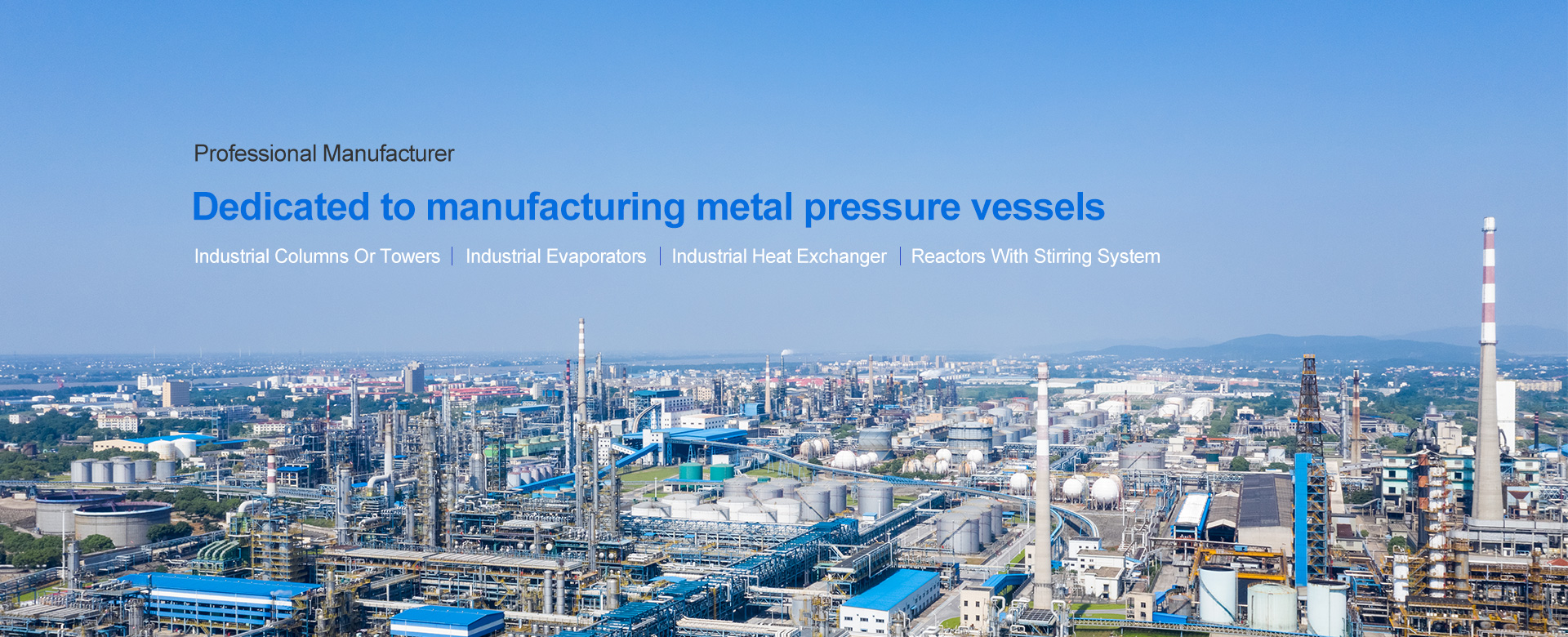
PRODUCTS

CONTACT US
+86-13706172093PRODUCTS








Wuxi Hongdinhua Chemical Equipment Co.,Ltd.is mainly engaged in researching, developing, designing and manufacturing metal pressure vessel used in Petrochemical industry, pharmaceutical, fine chemical, photoelectric, solar technology, new energy technology, environmental technology.
Research, develop, design, and manufacture metal pressure vessels
Wuxi Hongdinhua Chemical Equipment Co.,Ltd. Was established in the year of 2010 with registered capital of 10.8 miliion yuan (CNY). Wuxi Hongdinhua Chemical Equipment Co.,Ltd.is mainly engaged in researching, developing, designing and manufacturing metal pressure vessel used in petrochemical industry, pharmaceutical, fine chemical, photoelectric ...
More >
professional manufacturer
Rich industry experience
 On time delivery
On time delivery
convenient transportation
Strict testing before leaving the factory
Follow us to stay informed about industry trends
What You Need to Know About Natural Gas Dehydration Towers
Natural gas dehydration towers are critical components of upstream and midstream natural gas processing systems, designed to remove water vapor from raw natural gas to meet pipeline specifications, prevent equipment damage, and ensure safe, efficient transport and utilization. Raw natural gas extracted from reservoirs is saturated with water vapor (often 50–1,000 lb of water per million cubic feet (MMscf) of gas), which poses severe risks: the formation of hydrates (ice-like crystalline solids that clog pipelines and valves), accelerated corrosion of carbon steel infrastructure, and reduced energy density of the gas. Dehydration towers address these risks by leveraging either liquid absorption (e.g., glycol-based systems) or solid adsorption (e.g., molecular sieve systems) to reduce water content to industry standards (typically ≤7 lb/MMscf for pipeline transport, and ≤0.1 lb/MMscf for liquefied natural gas (LNG) production). This article details the design, working principles, system types, operational criticality, and industry standards of natural gas dehydration towers—aligned with API 510 (pressure vessel inspection) and GPA 2140 (water content measurement in natural gas). 1. Core Purpose & Operational Risks Addressed The primary function of a natural g...
2025-11-26

Applications of Wiped Film Evaporators in Industry
Wiped film evaporators (WFEs)—also referred to as thin film evaporators—are specialized thermal separation equipment designed for processing heat-sensitive, viscous, or high-boiling-point materials. Unlike conventional evaporators (e.g., falling film, batch evaporators), WFEs use a rotating wiper system to spread the feed liquid into a ultra-thin (0.1–1 mm) film across a heated cylindrical surface. This design minimizes residence time (typically 1–10 seconds) and maximizes heat transfer efficiency, reducing thermal degradation of sensitive compounds while enabling rapid evaporation under vacuum conditions (1–100 mbar). These capabilities make WFEs indispensable in industries where product quality (e.g., purity, thermal stability) and process efficiency are non-negotiable. This article details the key industrial applications of WFEs, their technical advantages in each sector, and alignment with industry standards (e.g., FDA 21 CFR Part 11 for pharmaceutical use, 3-A Sanitary Standards for food processing). 1. Core Design & Operational Advantages of Wiped Film Evaporators To contextualize their industrial utility, it is critical to first highlight the design features that make WFEs uniquely suited for challenging separations: - Ultra-Short Res...
2025-11-22

What Is the Main Purpose of Extraction?
Extraction is a fundamental separation process in chemical engineering, food science, pharmaceuticals, and environmental management, designed to selectively isolate one or more target substances (solutes) from a complex mixture (matrix) using differences in solubility, polarity, or phase affinity. Unlike distillation (which relies on volatility/boiling points) or filtration (which separates based on particle size), extraction leverages the preferential dissolution of the target compound in a specific solvent or phase—enabling the recovery of valuable components, removal of impurities, or concentration of active ingredients. Its core purpose is to transform raw, heterogeneous mixtures (e.g., plant biomass, crude oil, wastewater) into purified, usable fractions, making it indispensable for producing pharmaceuticals, foods, fuels, and specialty chemicals. This article clarifies the main objectives of extraction, key methods, industrial applications, and its role in modern manufacturing—aligned with standards such as ASTM E1386 (standard practice for solvent extraction) and USP <1224> (extraction in pharmaceutical analysis). 1. Core Purpose of Extraction: Selective Isolation & Purification At its heart, extraction serves four interconnected, industry-driven obj...
2025-11-19

What Is the Purpose of a Distillation Column?
A distillation column (also referred to as a fractionating column) is a purpose-built industrial device designed to separate homogeneous liquid or vapor mixtures into their individual components (fractions) based on differences in volatility—a property defined by a substance’s boiling point (more volatile components have lower boiling points and vaporize more readily). Unlike simple distillation (used for basic two-component separations, e.g., water-ethanol), distillation columns enable continuous, high-efficiency fractionation of complex mixtures (e.g., crude oil with 100+ hydrocarbons) by leveraging repeated cycles of vaporization and condensation across internal “stages” (trays or packing). This capability makes them indispensable in industries where purified or separated materials are foundational to production—from fuels and chemicals to pharmaceuticals and food products. This article clarifies the core purpose of distillation columns, their role in key industries, design adaptations, and the principles that enable their functionality—aligned with chemical engineering standards (e.g., ASTM D2892 for crude oil distillation, ISO 6570 for packed column performance). 1. Core Purpose: Fractionation via Vapor-Liquid Equilibrium (VLE) The primar...
2025-11-15

CONTACT US
Not sure which product is suitable for you? Let our knowledgeable sales team guide you in choosing the most suitable solution for your needs.